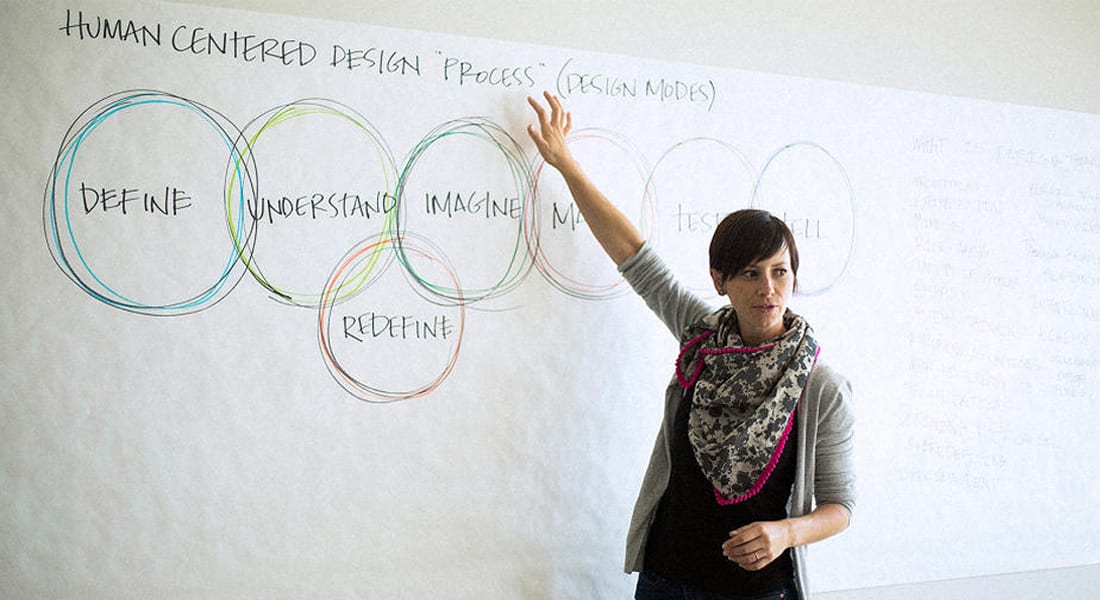Research professor Kate Canales believes design is crucial to disrupting higher education, and the timing has never been better.
Fast Company reporter Doreen Lorenzo interviewed Kate Canales, a research professor and the director of design and innovation programs at SMU’s Lyle School of Engineering.
Canales spoke to Lorenzo as part of Co.Design’s “Designing Women,” a series of interviews with inspiring women in the design industry. The interview published Dec. 7, 2016.
Canales oversees the popular Innovation Gymnasium and serves as Director of the new Master of Arts in Design & Innovation (MADI) program. She has a background in mechanical engineering, product design and design research. Much of her recent work focuses on building creative capacity inside organizations. She studies and teaches the ways we innovate on the basis of human needs and behavior, and is responsible for integrating empathy and creativity into the technical engineering curriculum. Kate teaches several design courses including Human-Centered Design and Building Creative Confidence.
She has worked as a designer and design researcher at IDEO and as a Creative Director at frog design, both internationally recognized leaders in the field of design and innovation.
Canales holds a B.S. in Mechanical Engineering from Stanford University. Her writing on human-centered design has appeared in GOOD magazine, The Atlantic, and The Journal of Applied Behavioral Science.
EXCERPT:
By Doreen Lorenzo
Fast Company
Doreen Lorenzo: How did you end up where you are today? Did you go directly to academia or did you jump into design first?Kate Canales: I started my early professional career at Ideo, right out of college. I grew up there over eight years. As a designer, Ideo is my hometown. Then after a couple of years working freelance, I joined frog design in Austin as a principal designer and then a creative director. In 2012 I joined SMU. Although that turn looks a little abrupt, in my heart it really made sense. I had been evolving to support work that did not just deliver great design to clients, but helped clients become more design-led. When SMU called and asked me to help them develop a design program, it was something that made a lot of sense to me. It felt like a natural progression.
Did you go to school for design?
My degree is in mechanical engineering, but I pursued a minor in studio art. Truly, I didn’t feel stirred by either one of those independently, but in the place where those two things overlapped I found a lot of fulfillment. That was design.My degree is in mechanical engineering, but I pursued a minor in studio art. Truly, I didn’t feel stirred by either one of those independently, but in the place where those two things overlapped I found a lot of fulfillment. That was design.Let’s talk about this phenomenon that’s called design thinking. Why is it so important?
In our program at SMU, we’ve chosen to use the term human-centered design, which overlaps dramatically with what people mean when they say design thinking.Design thinking emerged as a topic when we all started applying design methodology to problems that hadn’t traditionally presented themselves as design problems. For instance, using design as a problem-solving framework to understand how students might interact more effectively with online courses. That kind of problem might not have looked like a design problem previously. What we’ve learned is that design pairs really well with other ways of working.
